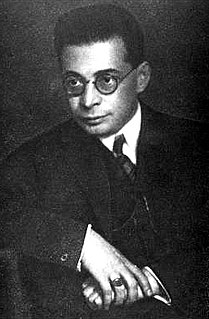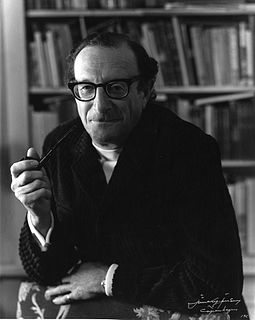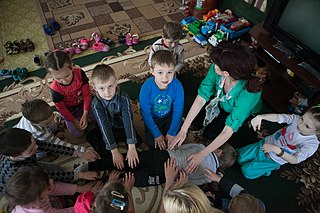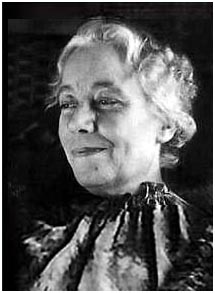
Psychoanalysis is a set of theories and therapeutic techniques related to the study of the unconscious mind, which together form a method of treatment for mental disorders. The discipline was established in the early 1890s by Austrian neurologist Sigmund Freud, who retained the term psychoanalysis for his own school of thought, and stemmed partly from the clinical work of Josef Breuer and others. Psychoanalysis was later developed in different directions, mostly by students of Freud, such as Alfred Adler and his collaborator, Carl Gustav Jung, as well as by neo-Freudian thinkers, such as Erich Fromm, Karen Horney, and Harry Stack Sullivan.
Psychotherapy is the use of psychological methods, particularly when based on regular personal interaction with adults, to help a person change behavior and overcome problems in desired ways. Psychotherapy aims to improve an individual's well-being and mental health, to resolve or mitigate troublesome behaviors, beliefs, compulsions, thoughts, or emotions, and to improve relationships and social skills. There is also a range of psychotherapies designed for children and adolescents, which typically involve play, such as sandplay. Certain psychotherapies are considered evidence-based for treating some diagnosed mental disorders. Others have been criticized as pseudoscience.

Sigmund Freud was an Austrian neurologist and the founder of psychoanalysis, a clinical method for treating psychopathology through dialogue between a patient and a psychoanalyst.
Transactional analysis (TA) is a psychoanalytic theory and method of therapy wherein social transactions are analyzed to determine the ego state of the communicator as a basis for understanding behavior. In transactional analysis, the communicator is taught to alter the ego state as a way to solve emotional problems. The method deviates from Freudian psychoanalysis which focuses on increasing awareness of the contents of unconsciously held ideas. Eric Berne developed the concept and paradigm of transactional analysis in the late 1950s.

Otto Rank was an Austrian psychoanalyst, writer, and teacher. Born in Vienna, he was one of Sigmund Freud's closest colleagues for 20 years, a prolific writer on psychoanalytic themes, editor of the two leading analytic journals of the era, managing director of Freud's publishing house, and a creative theorist and therapist. In 1926, Rank left Vienna for Paris and, for the remainder of his life, led a successful career as a lecturer, writer, and therapist in France and the United States.

Alfred Adler was an Austrian medical doctor, psychotherapist, and founder of the school of individual psychology. His emphasis on the importance of feelings of inferiority, the inferiority complex, is recognized as an isolating element which plays a key role in personality development. Alfred Adler considered a human being as an individual whole, therefore he called his psychology "Individual Psychology".
Psychoanalytic theory is the theory of personality organization and the dynamics of personality development that guides psychoanalysis, a clinical method for treating psychopathology. First laid out by Sigmund Freud in the late 19th century, psychoanalytic theory has undergone many refinements since his work. Psychoanalytic theory came to full prominence in the last third of the twentieth century as part of the flow of critical discourse regarding psychological treatments after the 1960s, long after Freud's death in 1939. Freud had ceased his analysis of the brain and his physiological studies and shifted his focus to the study of the mind and the related psychological attributes making up the mind, and on treatment using free association and the phenomena of transference. His study emphasized the recognition of childhood events that could influence the mental functioning of adults. His examination of the genetic and then the developmental aspects gave the psychoanalytic theory its characteristics. Starting with his publication of The Interpretation of Dreams in 1899, his theories began to gain prominence.

Eric Berne was a Canadian-born psychiatrist who created the theory of transactional analysis as a way of explaining human behavior.

Object relations theory in psychoanalytic psychology is the process of developing a psyche in relation to others in the childhood environment. It designates theories or aspects of theories that are concerned with the exploration of relationships between real and external people as well as internal images and the relations found in them. It maintains that the infant's relationship with the mother primarily determines the formation of his personality in adult life. Particularly, the need for attachment is the bedrock of the development of the self or the psychic organization that creates the sense of identity.

Otto Friedmann Kernberg is a psychoanalyst and professor of psychiatry at Weill Cornell Medical College. He is most widely known for his psychoanalytic theories on borderline personality organization and narcissistic pathology. In addition, his work has been central in integrating postwar ego psychology with Kleinian and other object relations perspectives. His integrative writings were central to the development of modern object relations, a theory of mind that is perhaps the theory most widely accepted among modern psychoanalysts.
Neo-Freudianism is a psychoanalytic approach derived from the influence of Sigmund Freud but extending his theories towards typically social or cultural aspects of psychoanalysis over the biological.

Play therapy is a method of meeting and responding to the mental health needs of children and is extensively acknowledged by experts as an effective and suitable intervention in dealing with children’s brain development. It is generally employed with children aged 3 years through 11 and provides a way for them to express their experiences and feelings through a natural, self-guided, self-healing process. As child experiences and knowledge are often communicated through play, it becomes an important vehicle for them to know and accept themselves.
Individual psychology is the psychological method or science founded by the Viennese psychiatrist Alfred Adler. The English edition of Adler's work on the subject (1925) is a collection of papers and lectures given mainly in 1912–1914, and covers the whole range of human psychology in a single survey, intended to mirror the indivisible unity of the personality.

Psychodynamics, also known as psychodynamic psychology, in its broadest sense, is an approach to psychology that emphasizes systematic study of the psychological forces that underlie human behavior, feelings, and emotions and how they might relate to early experience. It is especially interested in the dynamic relations between conscious motivation and unconscious motivation.

Freudo-Marxism is a loose designation for philosophical perspectives informed by both the Marxist philosophy of Karl Marx and the psychoanalytic theory of Sigmund Freud. It has a rich history within continental philosophy, beginning in the 1920s and 1930s and running through critical theory, Lacanian psychoanalysis, and post-structuralism.
Dyadic developmental psychotherapy is a psychotherapeutic treatment method for families that have children with symptoms of emotional disorders, including complex trauma and disorders of attachment. It was originally developed by Daniel Hughes as an intervention for children whose emotional distress resulted from earlier separation from familiar caregivers. Hughes cites attachment theory and particularly the work of John Bowlby as theoretical motivations for dyadic developmental psychotherapy.
Hyman Spotnitz was an American psychoanalyst and psychiatrist who pioneered an approach to working psychoanalytically with patients with schizophrenia in the 1950s called modern psychoanalysis. He also was one of the pioneers of group therapy.

Resistance, in psychoanalysis, refers to oppositional behavior when an individual's unconscious defenses of the ego are threatened by an external source. Sigmund Freud, the founder of psychoanalytic theory, developed his concept of resistance as he worked with patients who suddenly developed uncooperative behaviors during sessions of talk therapy. He reasoned that an individual that is suffering from a psychological affliction, which Freud believed to be derived from the presence of suppressed illicit or unwanted thoughts, may inadvertently attempt to impede any attempt to confront a subconsciously perceived threat. This would be for the purpose of inhibiting the revelation of any repressed information from within the unconscious mind.
The American Group Psychotherapy Association (AGPA) is a not-for-profit multi-disciplinary organization dedicated to enhancing the practice, theory and research of group psychotherapy.

Karen Horney was a German psychoanalyst who practiced in the United States during her later career. Her theories questioned some traditional Freudian views. This was particularly true of her theories of sexuality and of the instinct orientation of psychoanalysis. She is credited with founding feminist psychology in response to Freud's theory of penis envy. She disagreed with Freud about inherent differences in the psychology of men and women, and she traced such differences to society and culture rather than biology. As such, she is often classified as neo-Freudian.









